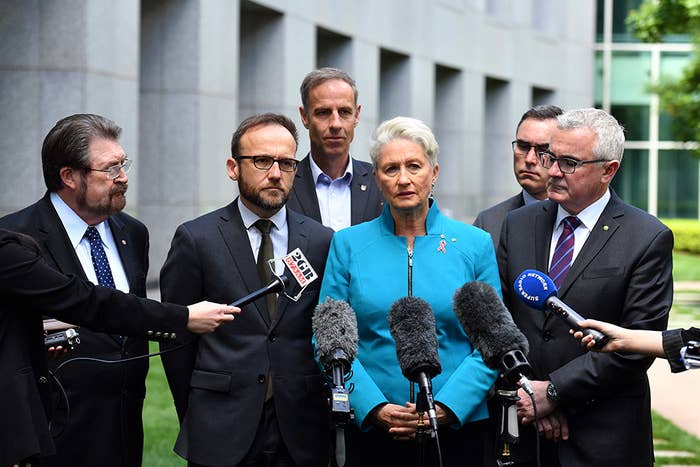
The Australian government rushed to approve the transfers of 11 sick refugees from offshore detention to Australia just over a week out from the start of the new medevac regime, documents obtained by BuzzFeed News reveal.
The group of bureaucrats tasked with deciding who was sick enough to have access to Australia’s healthcare considered 14 cases at its one-hour meeting on Feb. 19, 2019. They decided to transfer 11 of them and their families to Australia.
Most had flown to Australia by the end of February. Of the other three, one consented to treatment in Taiwan and the department sought the Nauruan government’s approval to transfer another to Australia. In a third case, the committee members favoured transfer to Australia, but it did not happen immediately.
The batch of approvals was a notable change of pace for the Australian government. The group, the Department of Home Affairs’ transitory persons committee, more commonly considered just one or two cases in a single meeting and had never discussed so many, its minutes show. BuzzFeed News obtained the heavily redacted minutes under freedom of information law.
The “medevac law”, which shifted the balance of power over medical transfers from the government to doctors, was approved by parliament on Feb. 13, despite protest from the government, then in minority, that it would undermine Australia’s border protection.
Under the law, which commenced March 1, the government must act on a recommendation from two doctors that a person held on Nauru or Papua New Guinea be brought to Australia, unless home affairs minister Peter Dutton or immigration minister David Coleman object on medical or security grounds. An independent panel of doctors can review medical objections.
But before March, decisions about whether to bring people to Australia for treatment were made by the government on the advice of the secretive transitory persons committee, a collection of Home Affairs bureaucrats and government doctors.
The task force’s minutes reveal that even when it considered a large number of cases in a single meeting, it did not usually decide to bring so many people to Australia. In its Nov. 9, 2018 meeting, it considered nine cases and recommended none be brought to Australia. Twelve were considered in a meeting three days later, with six transfers to Australia recommended.
BuzzFeed News has previously revealed that the committee was set up to consider diplomatic and financial factors, not just medical concerns. In one case, it heard that it would be best for “close scrutiny” to be avoided.
The government has repeatedly claimed medevac was unnecessary because it was already bringing people to Australia of its own accord. Under the first six months of the medevac regime, 127 people were approved to come to Australia.
Figures provided by the department to a parliamentary committee show that in February 2019, 34 people were brought to Australia under the pre-medevac process.
That is on the higher end, but not the greatest number that had been transferred in a single month.
In October 2018, 166 people were brought to Australia for treatment, 165 of them from Nauru. The minutes do not disclose the reason for the spike, suggesting the decisions were made urgently or out of session. The minutes show the committee only met once in October 2018 and discussed five cases.
The Department of Home Affairs did not respond to a BuzzFeed News request for an explanation about the unusually high number of cases considered in the February meeting.
